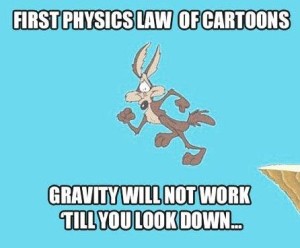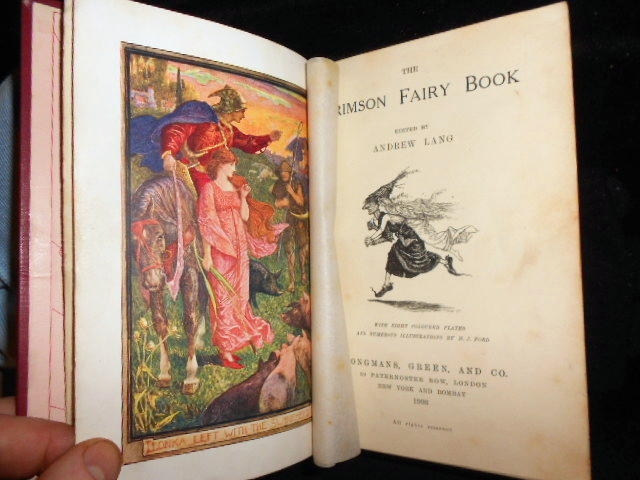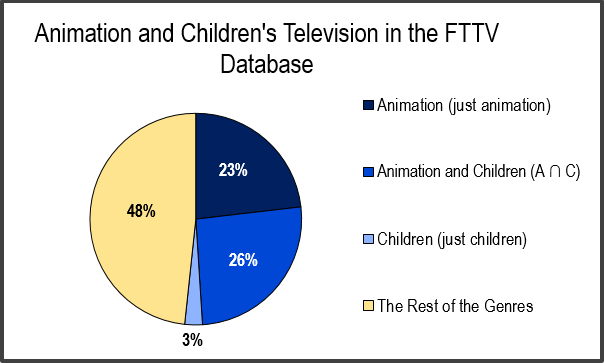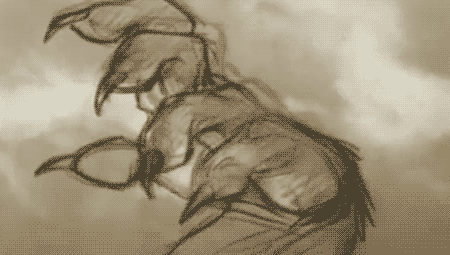Nearly half of the data points in our FTTV database come from animated shows or specials, including the oldest entries in our database, the 1922 animated short “Cinderella” (video) and “Three Little Pigs” from 1933 (video).
This led me to a question. What is it about fairy tales that lends them so well to animation? Furthermore, what is it about animation that makes it such a great medium for telling fairy tale stories?
As Paul Wells states in Animation: Genre and Authorship, fairy tales lend themselves naturally to animation for two main reasons: their open vocabulary and the long tradition of illustrations in fairy tales books.

Wells’ first reason that animation is a great medium for fairy tales is that animation’s “open vocabulary” helps accommodate the “more surreal narrative dynamics and thematic complexities of many fairy tales” (83). In other words, an animated world doesn’t have to be confined by the realities or rules of our world.
When something is animated, all of the events, both the supernatural and the realistic, happen on completely even ground. A character transforming from a animal to a person (or vice versa) is completely seamless, simply the transition between an artist (or a computer, I suppose) drawing an animal hand, a few intermediate steps, then a human hand. This can only be done uninterrupted by using animation, even the largely “live action” movies of this decade rely on animation for their fantasy sequences to show things that don’t happen in reality and can’t be portrayed by actors or practical effects.
Animation pulls us into a world of simple shapes and bright colors that is clearly not our own and therefore must have its own rules. In this world where bunnies can talk and where there’s time before gravity kicks in to look at the audience and say ‘oh no,’ it just follows that there may well be a bean that grows a hundred-foot beanstalk or a colony of giants in the sky.
 The second reason that connects animation and fairy tales is the long tradition of illustration in fairy tale books. Fairy tale books have been illustrated since the Grimm’s Die Kinder- und Hausmärchen (Children and Household Tales) and Andrew Lang’s Fairy Books, which first packaged literary tales as something for the consumption of children. When fairy tales were oral performances, they belonged to anyone who could hear the story being told. Illustrations were important in the literary texts because they give the children who can’t read yet a way to engage with the story while being read to. When fairy tales transitioned into something for children, they also got linked with illustrations.
The second reason that connects animation and fairy tales is the long tradition of illustration in fairy tale books. Fairy tale books have been illustrated since the Grimm’s Die Kinder- und Hausmärchen (Children and Household Tales) and Andrew Lang’s Fairy Books, which first packaged literary tales as something for the consumption of children. When fairy tales were oral performances, they belonged to anyone who could hear the story being told. Illustrations were important in the literary texts because they give the children who can’t read yet a way to engage with the story while being read to. When fairy tales transitioned into something for children, they also got linked with illustrations.

This “migration of fairy tales from the communal hearth into the nursery” happened in the 19th century and is the source of the general notion that fairy tales are ‘for kids’ (a notion we, a bunch of adults running a fairy tale blog, clearly do not agree with).

In conclusion, the prevalence of animated children’s shows in our database is result of the intersection of natural connection between fairy tales and animation and a natural connection between fairy tales and child audiences. Fairy tales may even play a role in explaining why animation is nearly always assumed to be for child audiences.
Join us next week for an excellent post on the romcom tropes and fairy tale themes in the CW’s Crazy Ex-Girlfriend!

